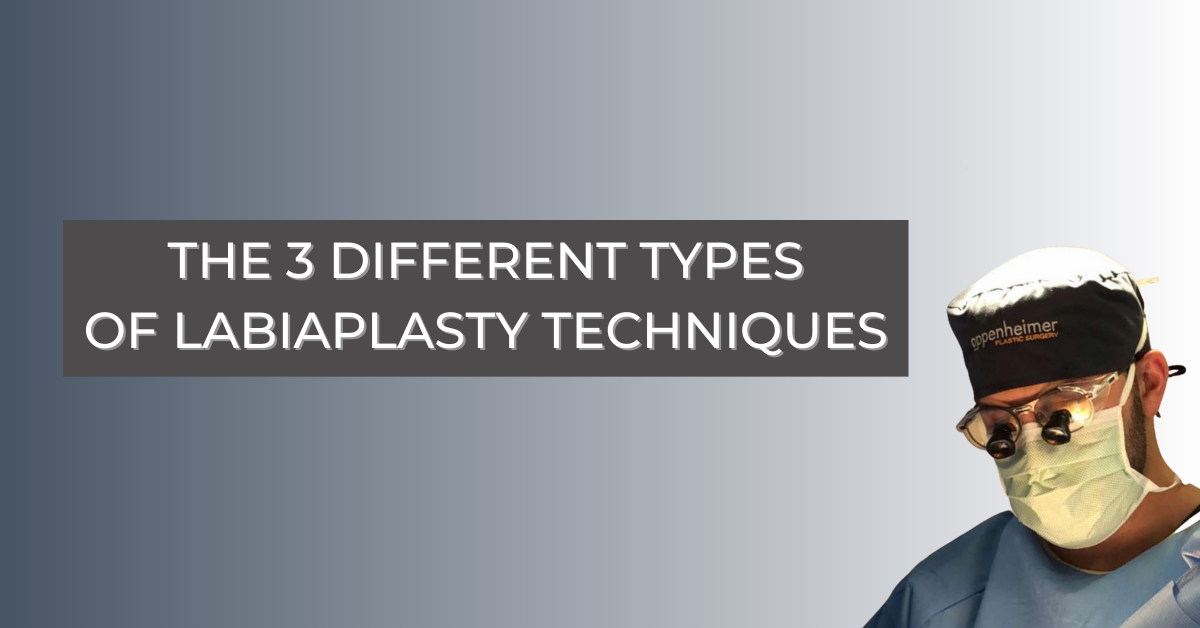
The 3 Different Types of Labiaplasty Techniques
A labiaplasty is performed for two main reasons: one, to decrease the physical discomfort caused by large labia, and two, to improve the aesthetic appearance of the labia. A labiaplasty resolves both form and function issues, improving self-confidence and decreasing self-consciousness.
Techniques used in Labiaplasty
There are three labiaplasty techniques in common use: the wedge, the trim, and de-epithelialization.
Wedge Labiaplasty
How it’s performed
The wedge technique was the first labiaplasty technique in common use. This technique removed a central triangle from the labia minora and joined the wedge together, so that healing occurred in a line perpendicular to the vaginal opening.
Results and benefits
The problem with this technique was that the labia would often heal incorrectly. The wedge would split open, leaving a cleft or gap in the middle of the labia. This would result in a visible notch in the central part of the labia minora, which was unsightly. The dark and rough edge of the labia was left behind, leaving a pigmented and folded edge that was not smooth.
This technique has largely been abandoned because of these poor healing and outcomes.
De-Epithelialization Technique
How it’s performed
The de-epithelialization approach to labiaplasty removes a fold of tissue on each side of the labia minora so that it’s basically pulled back inwards. The scar is more hidden in the fold between the inner and outer labia.
Results and benefits
This technique is an inferior technique because it does not remove enough labia tissue. The dark and pigmented edge is left behind, and too much tissue remains, leading to prominent and protruding labia minora. Incomplete correction of the problem persists.
Trim Technique
How it’s performed
The trim technique or edge labiaplasty with clitoral hood reduction, is the method that gives the best results. It is the technique that I use in every single labiaplasty I perform. First, a small pinch of hood tissue is removed from each side of the upper vulva. This brings balance to the prominent hood tissues, tucking them into the body while preserving all sensation to the clitoris.
Next, a smooth curve is marked to reduce the size of the labia minora. By removing the edge of the labia, the dark and rough tissue that is bothersome and unsightly to many, can be directly removed. This leaves a smooth pink edge that is gently curved you can see the results of this technique HERE.
Results and benefits
The trim or edge labiaplasty with clitoral hood reduction is by far the most powerful and safest technique. The healing is super fast from a labiaplasty, with virtually no healing issues or separation, the edge is smooth and pink, and there are no sensation changes after surgery.
How to decide which labiaplasty technique is best for you
There is only one good technique for a labiaplasty. And after performing hundreds of these surgeries, the edge labiaplasty (trim) with clitoral hood reduction is by far and away the best. The results speak for themselves in my extensive photo gallery. Focus on the results of your surgeon, make sure to see dozens of before and after photos of their work. If they only offer the wedge labiaplasty be very skeptical! This approach has major healing problems and will leave you with a notch or groove in your labia minora.